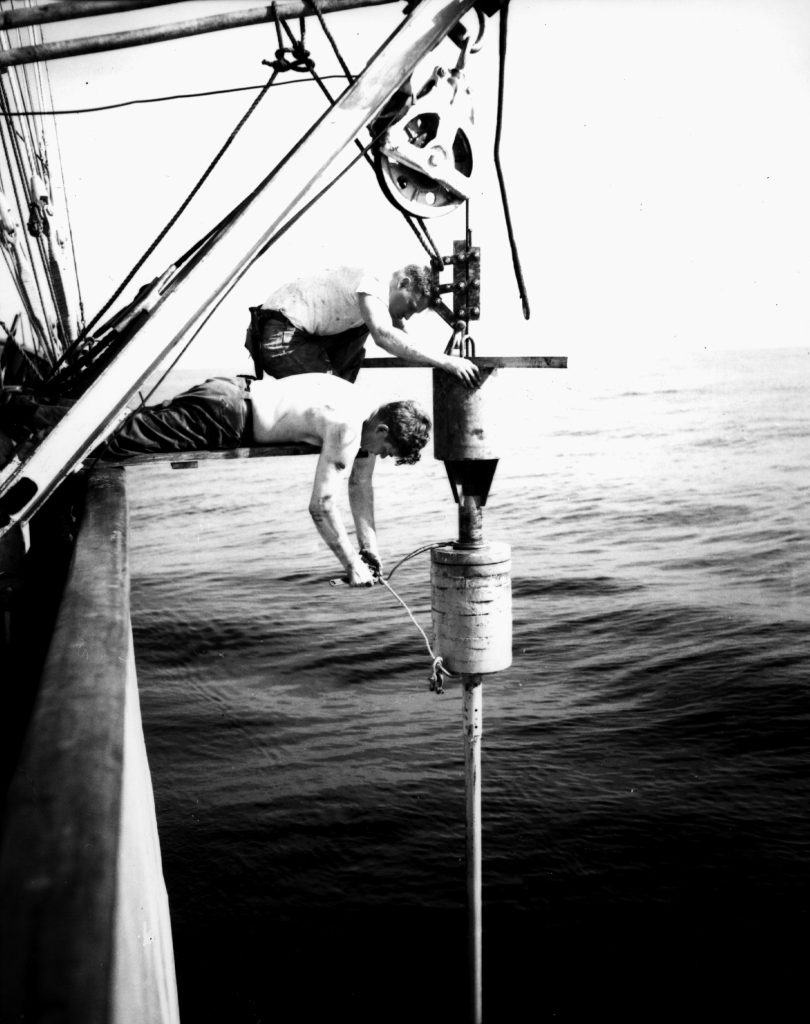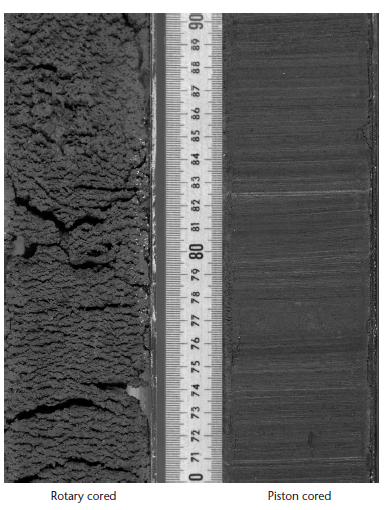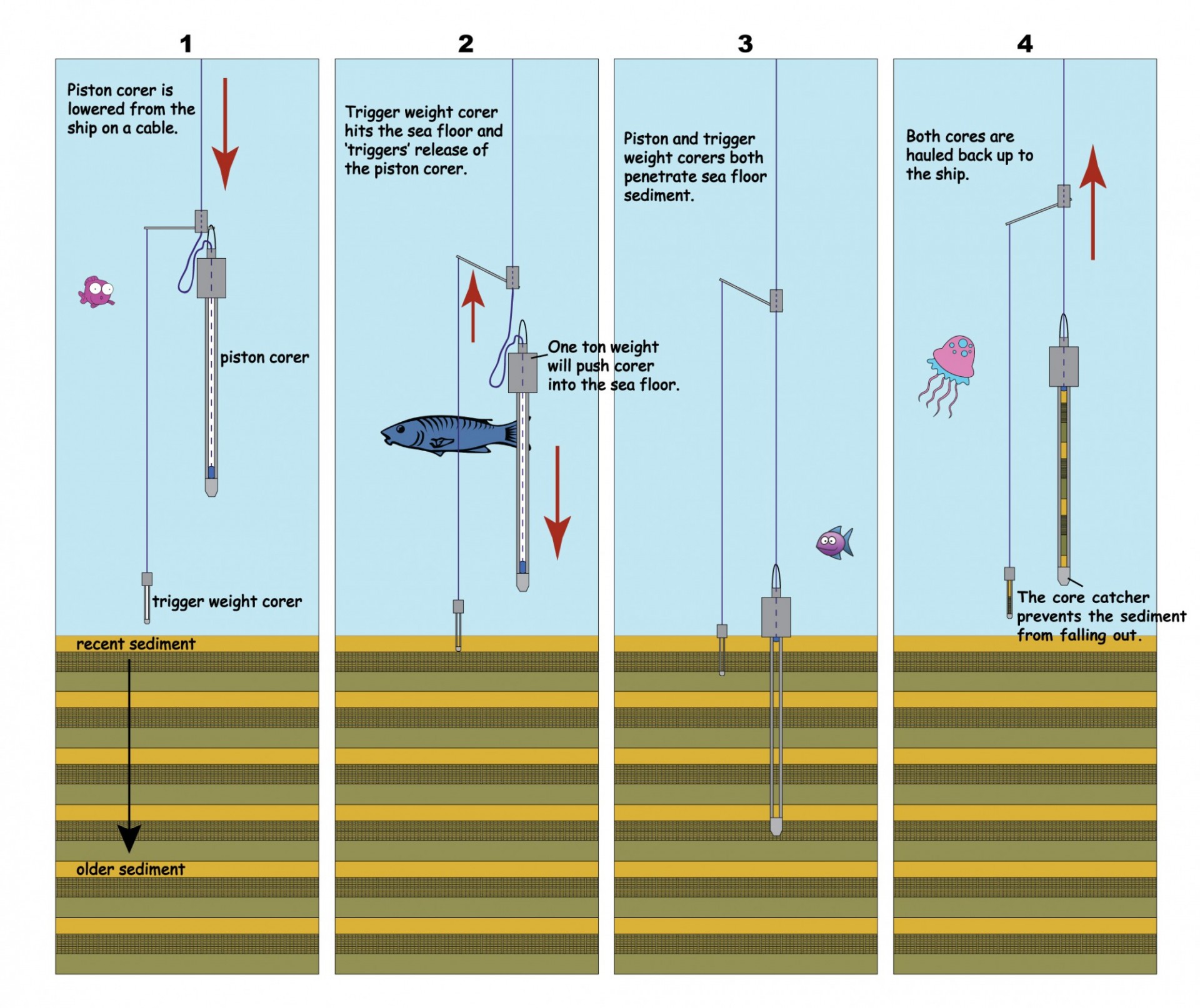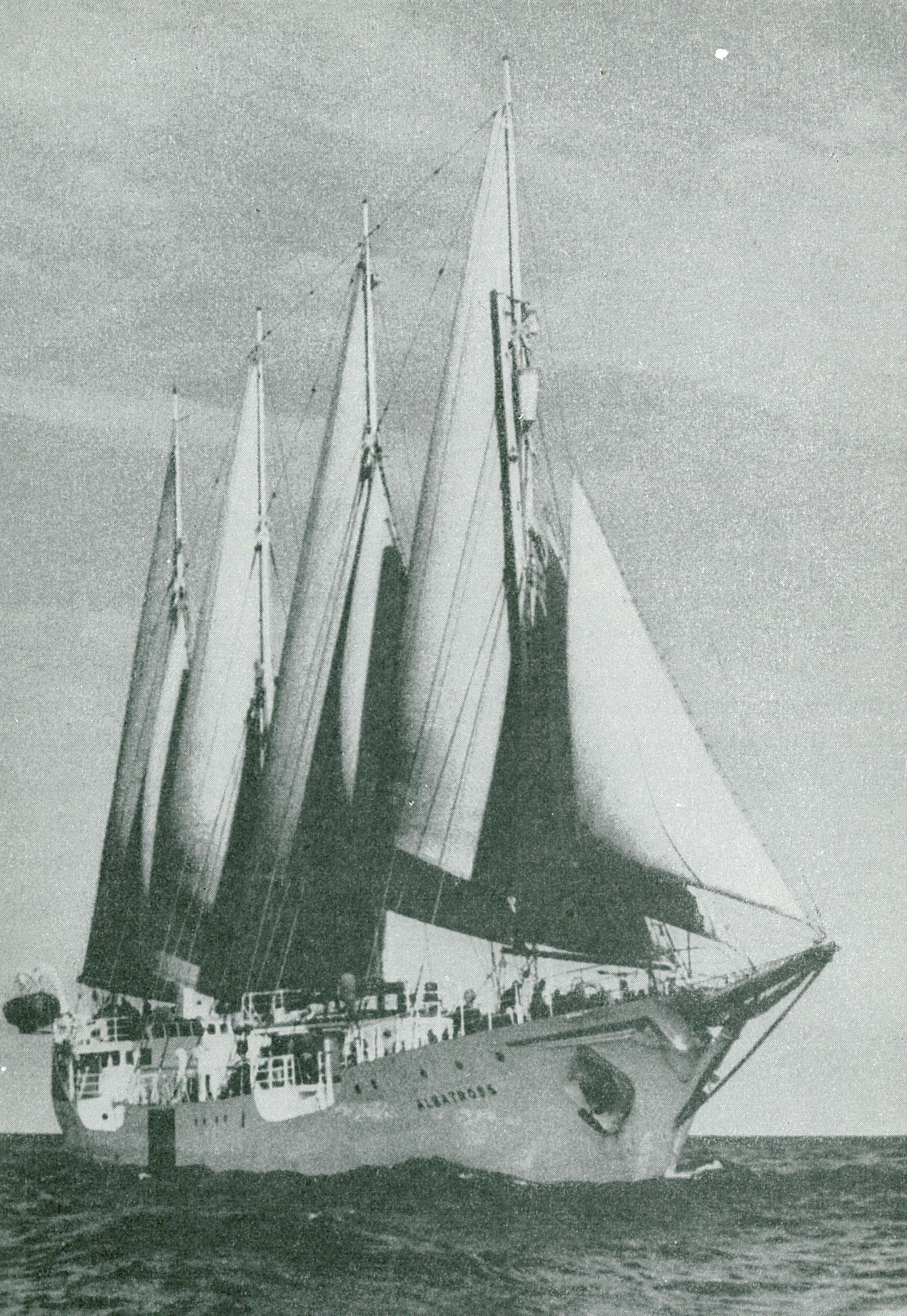2.2 Introducing Piston Coring

Cores extracted from the sea are especially useful because, unlike land sediments, they are largely undisturbed. No one has unsettled them by digging or walking on them. By studying undisturbed ocean sediment, scientists obtain the clearest picture of specific time periods on Earth. The also learn more about Earth’s interacting systems so that they can predict patterns and forecast events in the future. Piston coring allows for the extraction of long, intact ocean sediment samples, making it an essential tool for scientific ocean drilling.
Piston Coring is similar to Coring an Apple
The piston corer is a long, heavy tube plunged into the seafloor to extract samples of soft sediment. Inside the tube, a piston creates suction, helping to retrieve undisturbed samples that can reach impressive lengths—over 27 meters (90 feet). In 1947, Maurice Ewing, founder of the Lamont Geological Institute (now the Lamont-Doherty Earth Observatory), famously compared piston coring to coring an apple—simple yet highly effective. The key advantage lies in the piston, which helps draw up soft sediment that would otherwise be lost.
Piston Coring Improves Sample Collection
All corers share the same fundamental goal: extracting samples of seafloor sediment. Maurice Ewing also once compared corers to cookie cutters, with the size and shape of the “mud cookies” depending on the type of corer used. Traditional corers have a long, weighted tube that relies on gravity to drive it into the seafloor. However, this free-falling method can disturb the sediment layers, compromising the quality of the sample. Cores with rotary blades can also disrupt sediment. The photo below contrasts the sediment retrieved by both methods. Note the fine undisturbed sediment from piston coring.

In the late 1940s, Swedish oceanographer Börje Kullenberg refined this design by introducing an internal piston. As soon as the weighted coring tube makes contact with the sediment the piston mechanism activates. The piston is held in place by a cable as the tube is forcefully driven into the sediment. This difference in movement creates a vacuum effect inside the tube, which helps pull sediment in and reduces disturbance.
If you hve ever inserted a straw into a beverage, covered the top with your finger, and lifted it out with the liquid trapped inside, you can visualize how the piston corer works. The piston is like your thumb, covering the top of the tube to create the vacuum. Like a straw, the corer penetrates the seafloor and captures sediment within its hollow tube.
Unlike standard gravity corers, piston corers allow scientists to retrieve longer, more intact samples from soft seafloor materials, preserving a clearer record of Earth’s geological and environmental history. This diagram and the animation below, show the steps in the piston coring method.


Piston Coring advances Paleoceanography
The Kullenberg piston corer, now referred to as the piston corer was first used on a worldwide cruise of the Swedish research vessel Albatross from 1947 to 1948 (not to be confused with the United States’ steamer Albatross, mentioned in the last section). The sampling instruments previously used to retrieve sediments from the ocean floor had only managed to go down about two meters into the sediments, i.e. a few thousand years. With the help of the piston corer, the Swedish researchers managed to retrieve sediment cores as long as 20 meters, which made for an additional two million years.
The long sediment cores collected during the Albatross expedition bolstered the field of paleoceanography—the study of Earth’s ocean history through the study of ocean sediments. Thanks to the markedly longer cores obtained with the piston corer scientists could trace past climate and oceanic changes in the thick sediment layers. In fact, one of the discoveries from this expedition was that the last two million years have experienced more ice ages than previously thought. Paleoceanography has expanded into several specialized disciplines, including marine micropaleontology, physical paleoceanography, and palaeoclimatology.
Refinements to the original Kullenberg model led to the development of the advanced piston corer (APC), which became an essential device on JOIDES Resolution. The Drilling at Sea chapter provides further details on the APC and its significance.
References
University of Gothenburg, Department of Marine Sciences. (2023, April 21). The Swedish Albatross Expedition provided invaluable knowledge about the sea.

